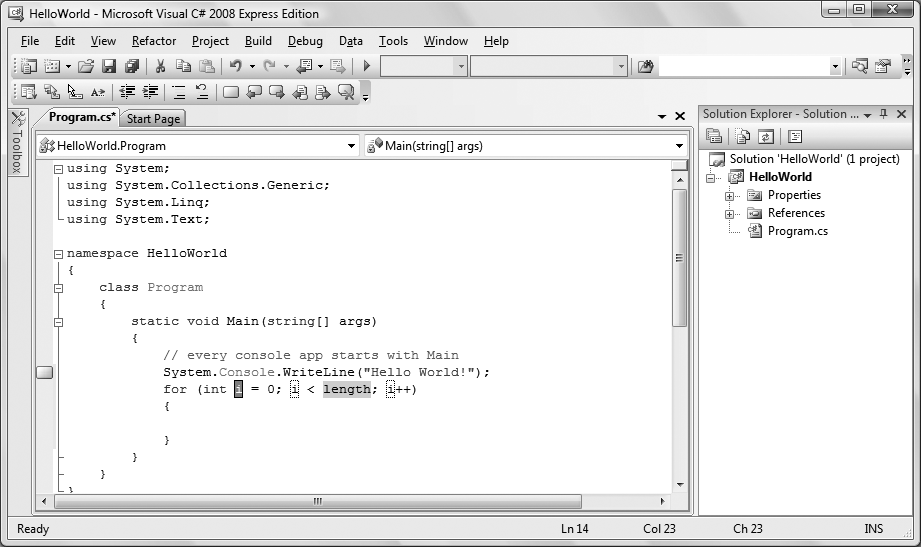Chapter 3: C# Language Fundamentals
Quiz Solutions
Solution to Question 3-1. A statement is a complete C# instruction, and must end in a semicolon (;).
Solution to Question 3-2. A variable of type bool can have one of two values: true or false.

Figure A-3. Exercise 2-3.
Solution to Question 3-3. C# contains both intrinsic types and user-defined types. Intrinsic types are built-in, and don’t do much other than hold values. User-defined types are much more flexible, and have abilities determined by code you write, as you’ll see later in the book.
Solution to Question 3-4. A float requires four bytes of memory and a double takes eight bytes, and thus a double can represent much larger values with greater precision. The compiler assumes that any number with a decimal component is a double by default. If you want to specify a float, you need to add the suffix f to the value.
Solution to Question 3-5. A variable is a placeholder for a value. A variable must have an identifier (or a name) and a type.
Solution to Question 3-6. In C, if you wish to use a variable of any type (such as passing it as a parameter to a method) you must first assign it a value. You can initialize a variable without assigning it a value, but you can’t use it in any way until it is assigned.
Solution to Question 3-7. The first two statements are fine. The first is just a simple assignment with no conversion. The second line ...
Get Learning C# 3.0 now with the O’Reilly learning platform.
O’Reilly members experience books, live events, courses curated by job role, and more from O’Reilly and nearly 200 top publishers.

